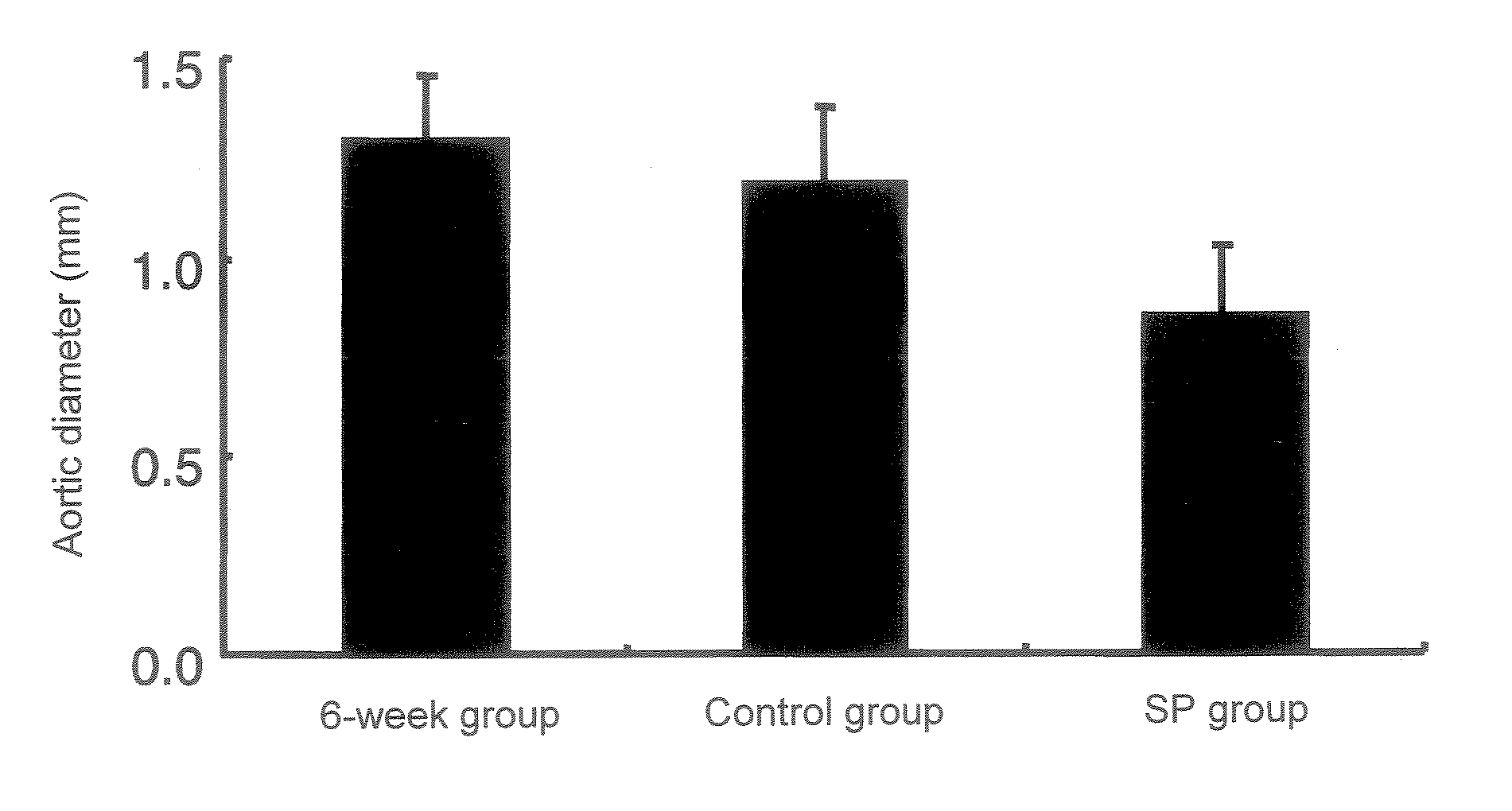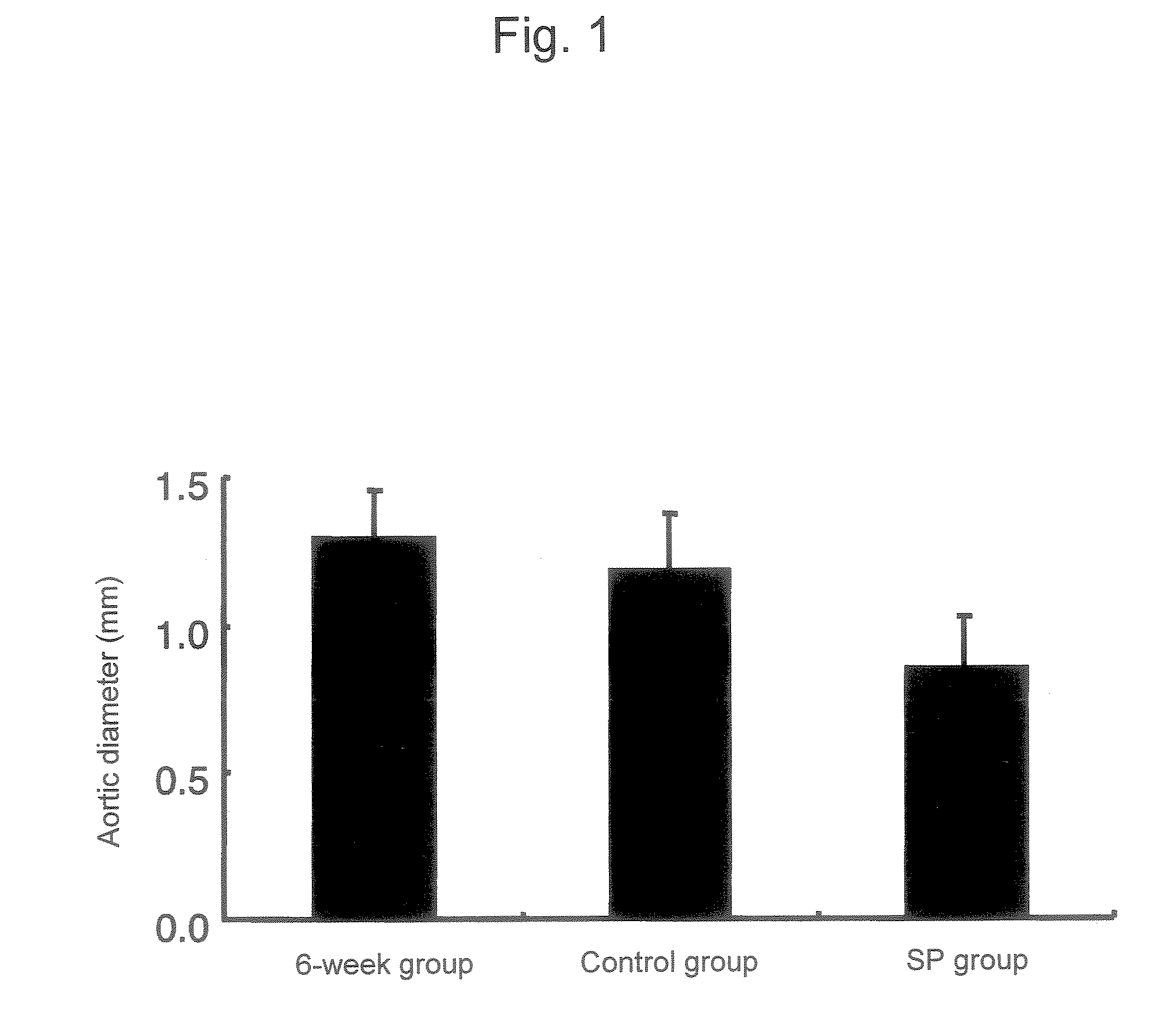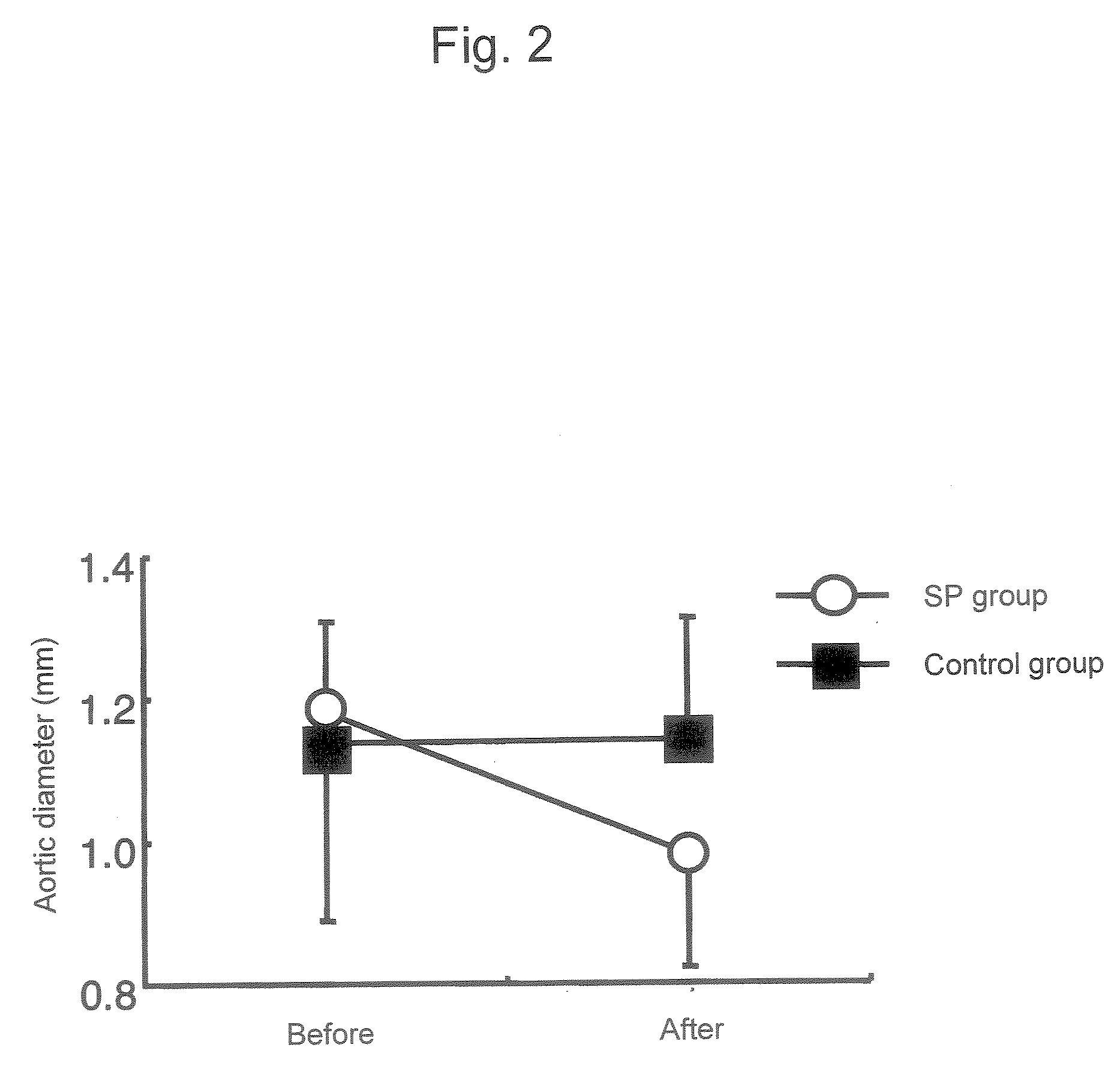Preventive and Remedy for Collagen or Elastin Metabolic Disorder
a metabolic disorder and collagen technology, applied in the field of collagen or elastin metabolism disorders, can solve the problems of increased risk of rupture, and abnormal skin pigmentation, and achieve the suppression of novel collagen synthesis, significant mmp-9 secretion, and reduced incorporation of 3h-labeled praline
- Summary
- Abstract
- Description
- Claims
- Application Information
AI Technical Summary
Benefits of technology
Problems solved by technology
Method used
Image
Examples
example 1
JNK Inhibition Experiment Using a Calcium Chloride-Treated Mouse Aneurysm Model
[Methods]
[0098] An abdominal aortic aneurysm model was generated by treating mice with calcium chloride according to Longo et al's method (J. Clin. Invest. 110: 625-632 (2002)). Specifically, the abdominal cavity of each 7-week-old male C57BL / 6 mouse was opened, the infrarenal abdominal aorta was treated with cotton impregnated with 0.5 M calcium chloride for 15 minutes, and then the abdominal cavity was closed. Aneurysms that gradually become dilated by week 10 are formed by this treatment. A sham surgery group was treated with physiological saline. A JNK inhibitor SP600125 (Tocris Bioscience: pyrazoleanthrone) (SP group) or a solution (control group) alone was subcutaneously injected daily into mice treated with calcium chloride. SP600125 was adjusted when used to a final concentration of 4.2 mg / ml according to Bennett et alas method (Proc. Natl. Acad. Sci U.S.A. 98: 13681-13686 (2001)) with a solutio...
example 2
JNK Inhibition Experiment Using an apoE Knockout Mouse Aneurysm Model
[Methods]
[0100] An abdominal aortic aneurysm model was generated through continuous administration of angiotensin II to apolipoprotein E (apo E) knockout mice according to Daugherty et al's method (J. Clin. Invest. 105: 1605-1612 (2000)). Specifically, mini-osmotic pump (Alzet) was implanted into 24-week-old apoE knockout male mice and angiotensin II (1 μg / min / kg) was continuously infused. These model mice were affected with hyperlipidemia, hypertension, and marked aortic arteriosclerosis. As a result of 4 weeks of angiotensin II infusion, aneurysm formation was observed mainly in the suprarenal abdominal aorta of these mice. Some of these mice died due to aneurysmal rupture. The model exhibited disease conditions that extremely resemble those of clinically observed human aneurysms. Simultaneously with the initiation of continuous infusion of angiotensin II, daily subcutaneous injection of a JNK inhibitor SP60012...
example 3
Experiment Concerning Aneurysm Therapy and aneurysm Regression Using a JNK Inhibitor in Calcium Chloride-Treated Mouse Aneurysm Model
[Methods]
[0102] An abdominal aortic aneurysm model was generated by treating mice with calcium chloride according to Longo et al's method (J. Clin. Invest. 110: 625-632 (2002)). Specifically, the abdominal cavity of each 7-week-old male C-57BL / 6 mouse was opened, the infrarenal abdominal aorta was treated with cotton impregnated with 0.5 M calcium chloride for 15 minutes, and then the abdominal cavity was closed. Following 6 weeks of rearing after treatment with calcium the mice were divided randomly into 3 groups. Mice of a 6-week group were sacrificed on week 6 after treatment with calcium and then the maximum diameter of the abdominal aorta was measured. On week 6 after treatment with calcium, daily subcutaneous injection of a JNK inhibitor SP600125 (SP group) or a solution alone (control group) to the mice of the other 2 groups was initiated. The...
PUM
| Property | Measurement | Unit |
|---|---|---|
| concentration | aaaaa | aaaaa |
| diameters | aaaaa | aaaaa |
| diameters | aaaaa | aaaaa |
Abstract
Description
Claims
Application Information
 Login to View More
Login to View More - R&D
- Intellectual Property
- Life Sciences
- Materials
- Tech Scout
- Unparalleled Data Quality
- Higher Quality Content
- 60% Fewer Hallucinations
Browse by: Latest US Patents, China's latest patents, Technical Efficacy Thesaurus, Application Domain, Technology Topic, Popular Technical Reports.
© 2025 PatSnap. All rights reserved.Legal|Privacy policy|Modern Slavery Act Transparency Statement|Sitemap|About US| Contact US: help@patsnap.com



